Who Is Steven Lehar?
Steven Lehar is many things. A proponent of indirect realism about perception. A champion of analog neural computation based on principles of harmonic resonance. And one of the most insightful and rational psychonauts of all times. His worldview packs a powerful punch of synergistic ideas, and reading his work is a psychoactive experience on multiple levels. Here are some of the highlights that made us decide to include Steven Lehar as a QRI lineage:
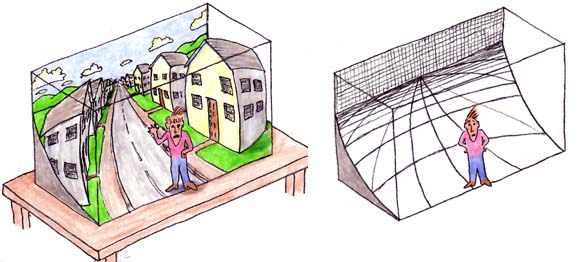
Indirect Realism About Perception
Let’s start with indirect realism. This view is often referred to as inferential realism about perception or representationalism. In simple terms, this view states that all of what you experience (and have ever experienced) exists as an internal representation inside your brain. The representation is absolutely real, but it is not itself the same as the world outside of you. Many people have realized this throughout history such as Immanuel Kant, Edmund Husserl, Bertrand Russell, and John Smythies. Today, the view continues to find proponents such as David Pearce, Donald Hoffman, and Antti Revonsuo. Thus, Lehar has never been alone in advocating for indirect realism. But what Lehar has contributed to the conversation is very substantial: he developed an exquisite map of the geometry and composition of our internal world-simulation that explains it in a way that you will not find anywhere else.

In the world of Steven Lehar, what we are is an analog volumetric bubble of phenomenal qualities made out of several layers interacting with one another (in the image above, the three circles on the left can be thought of as separate layers that combine into the circle on the right). To visualize the shape of our experience (indeed, the shape of us) he often makes an analogy with a diorama: our experience is shaped like a semi-sphere with variable scale. It is finite in volume, yet its peculiar sort of two-and-a-half-dimensional geometry allows it to represent both objects really close and really far at the same time.
In your bubble of experience, things in the distance appear both smaller and appropriately scaled. Indeed, “the point at infinity” is not infinitely far away! It merely represents an infinite distance via a projective trick, but the representation itself is of a finite size! Lehar argues that our experience is not 3D Euclidean, but rather non-Euclidean close to the homunculi (the empty head from which you look out into the world-simulation) and becomes more Euclidean the further away from this head you go.
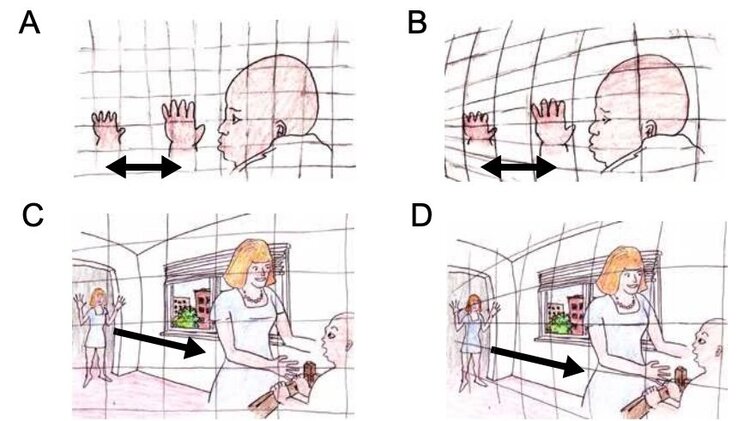
In some sense, to be a human is to embody a sack of meat. But if we pay really close attention and want to convey the actual structure of our experience, we end up saying that to be a human is to be this weirdly-shaped diorama-like world-simulation! You are not in the Matrix. You are the Matrix, my friend!
Lehar has cultivated and shaped an entire garden of phenomenological insights that emerge when you try to describe “the world” in this way. Just to give an example, a recurring theme in Lehar’s writings is that of “perceptual shadows.” In our world-simulation, we have incredible ray-tracing algorithms that simulate the way light scatters off objects. So we are acquainted with shadows that exist due to the absence of light. But there is also another kind of shadow, which is created when reality is represented using projective geometry: perceptual shadows are the shadows cast by the objects around you when they occlude the objects behind them. A large part of what makes our world-simulation so incredibly compelling is that it deals with missing information in very elegant ways. To understand how it does this, a key insight that Lehar provides is that our world-simulation contains both modal and amodal representations. The modal representations are what we traditionally associate with the senses: colors, sounds, touch, and so on. The amodal representations refer to the implicit geometric layout of the contents of our experience, which remain “dark” until you illuminate them with sensory modalities. This dichotomy allows us to understand why perceptual shadows don’t make objects truly disappear from our world-simulation (as long as we have developed object permanence, that is). The seamless handling of the perceptual shadows caused by occlusions showcases this fact: our phenomenal space contains amodal volumetric representations in addition to the visual “surface representations” we are familiar with. In other words, our inner world-simulation keeps track of rigid bodies even when we can’t see them directly!
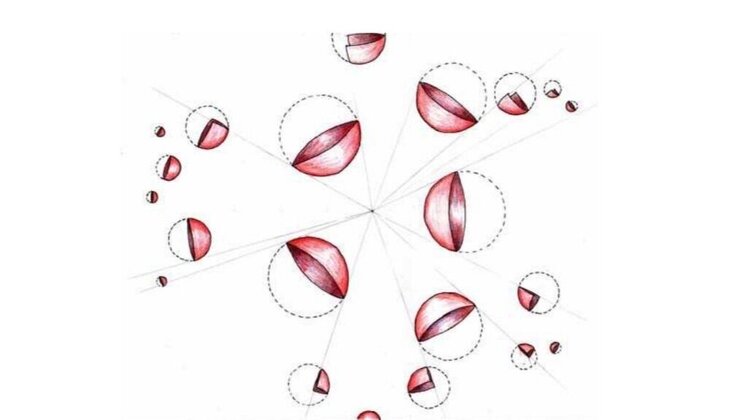
Another interesting nugget of insight is that in Lehar’s world, forces inside the world-simulation bias your motor actions and this is what renders and implements desire and disgust. In other words, there is something unexpectedly literal about saying that you are “attracted” to someone or something, or that an object or person “repulses” you! The way these forces are implemented can be conceptualized as fields that encode “how you would move at each point.” This proprioception is what guides the movement of our inner amodal avatar and how we plan sequences of actions.

Lehar makes us realize that as we navigate our environment, we move along something like a liquid membrane amenable to what feels like volitional influence, which guides our movement. This “force field” lives at the interface between our motor sensations and the volumetric representation of the external environment, and it works as a map between these two modes of experience.
The entire representation is robust in response to the vast majority of common actions we can take. The amodal representations of our environment get projected adequately as we move around and take on a new point of view. Many aspects of our world are rendered as invariant relative to body movement, head movement, or eye movement, and this is one of the ways in which our world-simulation instantiates a realistic experience of (perceptual) object permanence.
Ultimately, Steven Lehar is championing a steelmanned version of indirect realism which goes into much more precise phenomenological detail than any of its predecessors.
One may perhaps complain that Lehar is merely “stating the obvious.” Although indirect realism is a view that in many circles is widely shared and assumed, making it explicit still holds a lot of value. Indeed, Lehar points out that in the majority of the world, there seems to be an unrecognized level of variation in how much direct realism is implicitly believed. I used to be under the impression that most smart people who think about these questions automatically arrive at a view in the space of indirect realism about perception. But Lehar points out that in reality, we see both implicit and explicit direct realism even in places as “advanced” as neuroscience departments. Lehar’s visual demonstrations of indirect realism do an amazing job pointing at this unstated disagreement; indeed, the person sitting right next to you at a conference may in fact be an implicit direct realist about perception! No wonder you were never able to agree on what consciousness is.
The fact that so many people turn out to be unreflective direct realists about perception brings to mind Scott Alexander’s discussion on missing developmental stages (Alexander 2015) (see excerpt in Appendix A). In the piece, Scott Alexander lists four types of understanding that are obvious in retrospect but very commonly missed: “1. Ability to distinguish ‘the things my brain tells me’ from ‘reality’,” “2. Ability to model other people as having really different mind-designs from theirs,” “3. Ability to think probabilistically and tolerate uncertainty,” and “4. Understanding the idea of trade-offs.” In this light, a lot of Steven Lehar’s work focuses on trying to upgrade philosophy, psychology, and neuroscience so that people in those fields intuitively understand the first ability Alexander outlines. Lehar’s corpus is like a remedial class for the slow students of philosophy, if you will—helping them through the whole developmental process by making it easier to digest. Thus, Lehar’s work can help us systematically update all kinds of philosophical, psychological, and neuroscientific arguments by exposing them to a high level of clarity and rigor concerning indirect realism. This process clarifies a huge amount of confusion and paradoxes many people in these fields are often consumed by.
In practice, if you listen to the questions in the Q&A portion of panels about consciousness at conferences, or read between the lines in journals of philosophy, neuroscience, and even AI, you will find that a large proportion of the speakers, writers, and attendees do work under the assumption of direct realism about perception. Even if only 30% of people at science conferences are implicit direct realists (which would be a conservative estimate), we would still expect no shortage of resistance and controversy when indirect realism is brought up. My personal experience is that often at these events, it is precisely when the conversation starts to get very good and become high quality that someone who doesn’t “get it” inevitably derails the conversation with questions typical of a direct realist. And while diversity of opinion can at times be an asset, my experience is that the most satisfying, useful, and consequential conversations are precisely those that take place between people who share almost all background philosophical assumptions. This more often than not gives me the impression that grouping people who are at similar developmental levels (in the realm of philosophy) would likely generate more useful discussions. Not that it isn’t fun to get people with widely different points of view together and get them all mixed up: it is always fascinating to observe the dialectical turbulence that ensues. But a serious investigation calls for more explicit foundational agreement on many levels. As much as I actively enjoy the state of consciousness induced by attending The Science of Consciousness (Gomez Emilsson 2016b) conference (and delight in its unlikely yet amazing cultural products), I cannot shake off the impression that there is a lot of friction in conversations caused by the vast mismatches between the background assumptions of the participants. A conference that brings together over a thousand participants interested in consciousness from disciplines like philosophy, psychology, and artificial intelligence without any filter for background assumptions is a wonderful recipe for a trippy time. One would hope it could also generate conversations where consensus is achieved. It is in contexts like this where the tireless work of Steven Lehar—explaining in astonishing detail the various components and properties of our experience (and its peculiar artifacts) in order to make it as clear as possible that all we ever experience is an inner world-simulation—is extremely valuable at the community level. Seriously, printing massive copies of Lehar’s Cartoon Epistemology (Lehar 2003) and installing them in a hall of the conference lobby would be an excellent way to increase the quality and clarity of the discussions.
This fact alone makes him someone we are happy to include as part of our lineages. Having “Lehar-aware” conversations about consciousness often takes people to the next level quickly. At QRI, we want to endorse having these ideas in the background along with the key insights obtained from each of the other lineages when creating the conditions for a qualia formalist science of consciousness (Gomez Emilsson 2018b).
But wait, there is more!
Analog Neural Computation Using Principles of Harmonic Resonance
The very heart of Lehar’s work outlines how harmonic resonance shows up as a principle of self-organization in the mind.
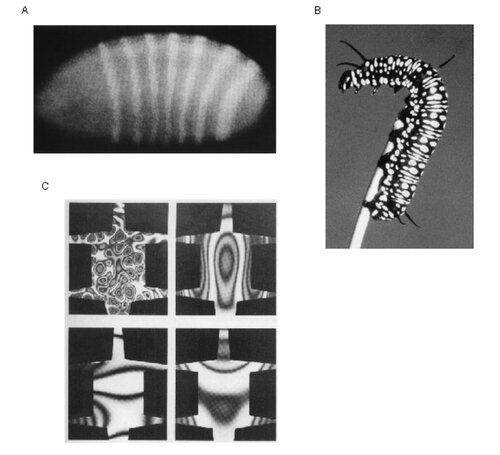
Steven Lehar argued against the (at the time) prevailing neuron doctrine of neural computation which states that the contents of our experience are the result of the activity of highly discrete and individualized neurons that “encode’’ high-level features (such as a “grandma cell”). Importantly, Lehar points out that there is a key distinction between “rendering” an experience and merely “encoding” it. If you look for neurons that get activated if and only if a certain experience is happening you will be inadvertently mapping out how the brain encodes information rather than how it renders it. Failing to make this distinction will trap you in a worldview that is extremely hard to square with phenomenological facts. Of note is that our internal representations are flexible, a fact that the neuron doctrine finds really difficult to account for. As he puts it in “Harmonic Resonance Theory”:
There are several properties of the harmonic resonance model that are suggestive of human recognition. Unlike a rigid template, the pattern defined by a standing wave representation is elastic and adaptive. This can be seen in the manner that the spatial patterns of animal skins are defined. The parameters of the reaction-diffusion that distinguish between the spots and stripes of the tiger, zebra, leopard, and giraffe are encoded as general rules for the generation of those patterns rather than as a spatial template of any one such pattern. For example if a spot or stripe were to be fixed at one point as the pattern was emerging, the rest of the pattern would redistribute itself to adapt to that fixed feature while maintaining the general character of the encoded pattern. This invariance in the representation allows one set of parameters to generate an infinite variety of exemplars of any particular pattern type, or to adapt most flexibly to any fixed constraints or boundary conditions. (Lehar 1999)
This flexibility of our internal representations is essential for understanding how the brain solves the “binding problem”: how is it possible that distributed neuron firings can simultaneously contribute to a unified internal representation? Indeed, Lehar takes the binding problem seriously and his solution involves resonance across spatial and temporal levels. This way, one can get representations that “lock in” low-level features to the high-level phenomenal objects that integrate them. In turn, our world-simulation works in a holistic fashion: every part of it pulls and pushes every other part of it. He explains it well in this interview:
Q: What would be the new paradigm in neuroscience?
A: The first thing that it will change is our concept of how the brain works. Right now we are in a neuro-reductionist era where people are making probes ever smaller and smaller to read into tinier and tinier parts of the brain and read the signal there and try to make some kind of sense out of it. The paradigm that they are thinking is discrete connections between individual neurons mediated by synapses. And separate individual signals going every different direction. What we see in consciousness is a much more holistic process. Something like water seeking its own level in a vessel, where the final state of the water depends on every position of every other molecule. If you change one portion, scoop out some water in one place or dump some in some other place, every single molecule in the bath quickly readjusts itself in order to seek a new level. It is a different paradigm of computation. It is what the gestaltists proposed: field theories of mind, not in the terms of fields of mental energy propagating out into the world, but fields of physical energy in the brain interacting with each other in a holistic manner the way that water seeks its own level in a vessel. (Sandu 2016)
In Lehar’s world, the three-dimensional volumetric representations that we experience “around us” are internal representations made with a hierarchy of patterns of resonance which are mode-locked with one another. From the tiniest detail to the broadest outline, when we experience a phenomenal object as “rigid,” we are in fact experiencing a complex network of resonating patterns locked in place as a stable “solution” of a network of tuned oscillators. In other words, the binding problem is solved explicitly by hierarchical resonance at all levels. This model can explain many of the bizarre effects of psychedelics (which we’ll discuss further below) in terms of a decoupling between the resonance of the different levels! Or as Lehar would put it, “everything on LSD looks like a Fourier representation with the high-frequencies chopped off,” meaning that the fine details that would usually cancel out the broad repeating patterns of low-frequency resonance are desynchronized, and thus objects look as if they were filled with symmetrical and resonating filigree patterns!
Since Lehar worked on “Harmonic Resonance Theory,” there have been many advancements in neuroscience and the field of AI. In particular, two very noteworthy connections should be highlighted. The first is the work of Selen Atasoy (who is also one of QRI’s lineages) on connectome-specific harmonic waves (Atasoy 2016). Atasoy, like Lehar, identified principles of harmonic resonance in physics and biology (such as Murray’s leopard spots and zebra stripes in the standing waves of vibrating sheets of steel) and decided to apply them to the brain. Unlike Lehar, Atasoy found an empirically measurable aspect of the brain amenable to this kind of modeling: the connectome. Thus, Atasoy’s work enables the study of the standing waves that Lehar hinted at qualitatively, but now in an empirical and quantitative way.
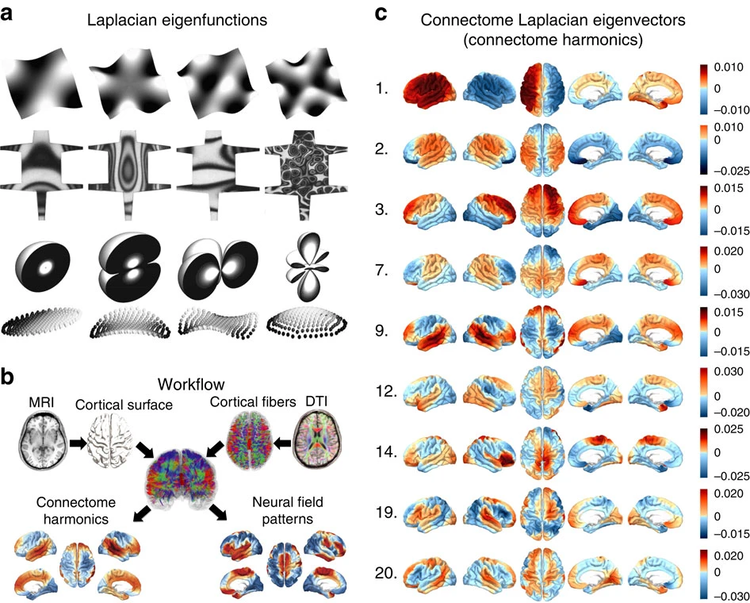
In this way, the work of Atasoy and Lehar can be thought of as complementary rather than redundant: Lehar brings the phenomenological observations and arguments whereas Atasoy comes up with the precise empirical quantitative paradigm. Along these lines, we can already see possible extensions of this work. Namely, as we find more core structural scaffolds of the nervous system, we can examine them in light of a paradigm of harmonic resonance by building high-definition structural models, empirically extracting their corresponding wave equations, and then numerically approximating the emergent resonant modes of such structures. The beauty of this paradigm is that suddenly, large amounts of self-organizing complexity can be compressed in terms of weighted sums of harmonic resonant modes. At QRI, we consider this general paradigm to be extremely promising and endorse exploring how the overlap between these two great researchers leads to novel models of neural computation.
The second development that is important to point out is how advancements in artificial neural networks seem to have brought back the neuron doctrine with a vengeance. You get the impression that feature visualization techniques (Olah, Mordvintsev, and Schubert 2017) allow us to make sense of what each neuron in a network “does.” Recent work at OpenAI takes this further and identifies recurring principles of self-organization that emerge in artificial neural networks (i.e. circuit motifs (Olah et al. 2020)).
The key to make sense of this is to recall the distinction between encoding and rendering. In Lehar’s world, populations of neurons that implement specific kinds of pattern recognition are in fact tuned resonators (Lehar 1999). Think of these resonators as having the function of adding clamps or pinches to a vibrating Chladni plate: the actual experience being rendered is the pattern of standing waves that emerge from the pinched plate, not the pinches themselves. While there is an extremely detailed correspondence between the content of experience and these clamps, what the experience is requires the pattern of standing waves to happen. Thus, insofar as artificial neural networks do not bring about such standing waves, they will simply and forever fail to render the contents of any experience.
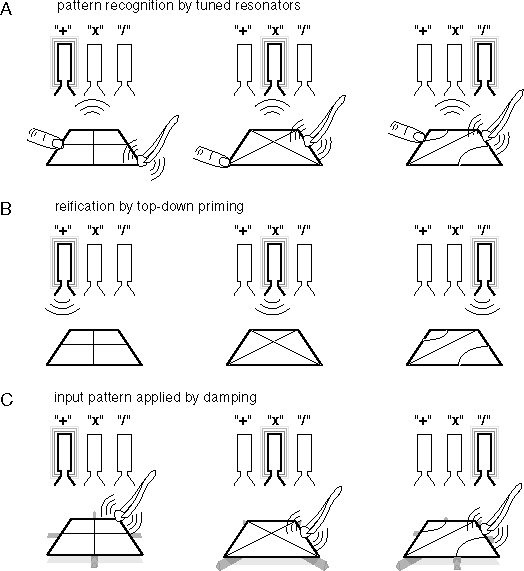
Naturally, this is a testable view, since we can in principle manipulate the standing wave patterns directly (with e.g. transcranial magnetic stimulation). At QRI, we expect that in the future, this distinction will be extremely important. Without it, we would be at risk of thinking that specific computations done in digital computers entail qualia even though there is in fact no “rendering of experience” going on at all in the computational system as a whole.
A final note on this discussion is that Steven Lehar also has a theory of aesthetics. Foreshadowing the Symmetry Theory of Valence, first suggested by Johnson (Johnson 2016), Lehar proposes a theory of aesthetics based on principles of harmonic resonance that explains our preference for symmetrical patterns. See the excerpt below titled “A Psycho-Aesthetic Hypothesis” in Appendix A. Thus, another key parallel between Lehar’s work and our models at QRI is that we have a non-standard interpretation of neuroanatomical functional localization. In particular, we think that the impression that “pleasure is what goes on in the pleasure centers” is at least in part an artifact of our measuring tools. As Michael Johnson postulates, the reason why activating the pleasure centers feels good is because they are strategically positioned in such a way that you get large-scale (consonant) resonance across the brain. In other words, the pleasure centers are “tuning knobs” for global synchrony in the brain! Thus, they are a kind of “master clamp” for harmonic resonance in the brain. What feels good is such resonance and not the activation of the pleasure centers per se. Don’t expect to find “beauty” in a single neuron; both Lehar and QRI will be quick to point out that beauty is a holistic property of a holistic system!
But wait, there is more!
Rational Psychonaut
Steven Lehar is a rational psychonaut: many of his insights are the result of paying close attention to the way specific aspects of experience break down under various states of consciousness. More so, Lehar’s clarity about indirect realism makes him a rather unusual and valuable psychonaut. As he points out, when you take a psychedelic you either “discover a new and deeply mysterious portal to a parallel dimension of reality like John Lilly, Timothy Leary, and Terrence Mackenna” or you realize that the features of your inner world-simulation are changing in ways that give the impression that alternate realities exist (Lehar 2019). In other words, implicit theories of perception influence how one interprets alien state-spaces of consciousness! For example, even Albert Hoffman seemed to have been working under the implicit assumption of direct realism about perception:
If one continues with the conception of reality as a product of sender and receiver, then the entry of another reality under the influence of LSD may be explained by the fact that the brain, the seat of the receiver, becomes biochemically altered. The receiver is thereby tuned into another wavelength than that corresponding to normal, everyday reality. Since the endless variety and diversity of the universe correspond to infinitely many different wavelengths, depending on the adjustment of the receiver, many different realities, including the respective ego, can become conscious. (Hofmann, n.d.)
Talking about psychedelic states of consciousness in light of indirect realism is really refreshing. Now, I am not saying that productive discussions within a direct realism framework cannot be had. But we often find that many unproductive discussions are the result of having a (implicit) direct realist and an (implicit) indirect realist analyze psychedelic experiences without knowing that they don’t share the same key background philosophical assumption. And this is the state of the discourse today! This muddled situation manifests all the way into presentations at the Psychedelic Science and Horizons conferences, for example, where presentations typically straddle between these views. The ambiguity tends to be better received by the audience; leaving implicit background assumptions unchallenged avoids conflict but slows down progress. So the state of the discourse is one where ambiguity about this is rewarded! No wonder the field is so confused and confusing. And in turn we find ourselves endlessly debating the “external reality” of DMT elves rather than moving on to talk about more productive questions such as the geometry, valence, and computational properties of the hallucinated worlds (Gomez Emilsson 2019).
Of course in reality there are many “middle points” between direct and indirect realism with regards to models of psychedelic action. A hybrid view that a lot of people seem to implicitly hold is one where all we ever experience are the contents of our internal world-simulation, but that some “channels” of this inner world-simulation can be mode-locked with external “subtle” phenomena (e.g. explaining “contact high” as a “subtle body resonance between people”). That said, applying Occam’s razor, it is rational to first try to explain the zoo of psychedelic effects (Gomez Emilsson 2016a) in terms of changes to the parameters of our inner world-simulation, and only when we cannot explain some phenomena, return to alternative explanation spaces. What Steven Lehar and other rational psychonauts highlight is that the original psychedelic visionaries seemed to have “given up” too quickly on an indirect realist model (or perhaps they were always implicit direct realists on some level). It is refreshing and reassuring to read Lehar’s comments about having experienced things like “out of body experiences,” “bilocation,” “fragmentation of the point of view,” “telepathy,” and so on and yet continue to interpret these phenomena in light of parameter changes inside a world-simulation. It shows that one can indeed stay rational, analytical, and grounded even after experiencing the extremely exotic states of consciousness psychoactives can trigger.
In his book The Grand Illusion (Lehar 2010), Lehar walks us through his journey as a psychonaut. It would not be an exaggeration to say that this work is one of the absolute best pieces of content concerning the phenomenology of altered states of consciousness induced by psychoactive drugs. The entire book is filled with keen, poignant, and crisp observations which are “obvious in retrospect” yet easy to miss in the moment. To name a few:
- Point of view fragmentation is a phenomenon that happens on psychedelics where your visual field segments into various parts, each with its own projective point of perspective. Lehar explains that one can modulate this phenomenon by the extent to which one relaxes and unfocuses versus how much one moves around and interacts with the world: “This discovery greatly enhanced my ability to explore the deeper spaces of consciousness revealed by the drug, while providing an insurance against the natural panic that tends to arise with the dissolution of the self, and the world around you. It allowed me to descend into the depths of the experience while maintaining a life line back to consensual reality, like a spelunker descending into the bowels of the deep underground cavern of my mind, while always able to return safely to the surface. And what a splendid and magnificent cavern it was that I discovered within my mind!” (p. 23-24).
- Lehar’s ideas about annealing in the context of ketamine foreshadowed QRI’s framework of neural annealing (Johnson 2019) and Carhart-Harris’ model of entropic disintegration (Carhart-Harris et al. 2014) by many years: “The totally confused clamped-down experience described above, applies only to the first phase of the Ketamine high. After maybe a dozen or so Ketamine experiences, I began to see a larger pattern in it, as whatever it was that clamped my thoughts slowly began to loosen its grip during the time course of each trip, and my thoughts gradually felt ever more freedom of motion, as first (metaphorically speaking) I could move my hands and feet, then my arms and legs, then my head, and eventually my whole body was released from the grip of the drug and slowly returned to normal integrated consciousness. The last stages, just before a rather abrupt and stepwise return to normal awareness, were the most emotionally powerful and stupendously magnificent, as the largest chunks of reality finally coalesced into an integrated experience” (p. 81).
- According to Lehar, MDMA’s nystagmus is just a special case of a more general jittering that MDMA causes in one’s inner world-simulation across the board: “[T]here is a kind of jitteriness across the whole visual field. And this jitteriness is so pronounced that it can manifest itself in your eyeballs, that jitter back and forth at a blinding speed. If you relax, and just let the jitters take over, the oscillations of your eyes will blur the whole scene into a peculiar double image. But if you concentrate, and focus, the ocular jitter can be made to subside, and thus become less noticeable or bothersome. One of my friends got the ocular jitters so bad that he could not control them, and that prevented him from having a good time. That was the last time he took ecstasy. I however found it enchanting. And I analyzed that subtle jitteriness more carefully. It was not caused exclusively by jittering of the eyeball, but different objects in the perceived world also seemed to jitter endlessly between alternate states. In fact, all perceived objects jittered in this manner, creating a fuzzy blur between alternate states. This was interesting for a psychonaut! It seemed to me that I could see the mechanism of my visual brain sweeping out the image of my experience right before my eyes, like the flying spot of light that paints the television picture on the glowing phosphor screen. The refresh rate of my visual mechanism had slowed to such a point as to make this sweep visible to me” (p. 60).
- Lehar offers a unique interpretation of how LSD and MDMA interact with one another which is compatible with our model of negative valence as neural dissonance (Gomez Emilsson 2017a): “Under LSD and ecstasy I could see the flickering blur of visual generation most clearly. And I saw peculiar ornamental artifacts on all perceived objects, like a Fourier representation with the higher harmonics chopped off. LSD by itself creates sharply detailed ornamental artifacts, like a transparent overlay of an ornamental lattice or filigree pattern superimposed on the visual scene, especially in darkness. Ecstasy smooths out those sharp edges and blurs them into a creamy smooth rolling experience” (p. 61).
- Lehar identified a family of states of consciousness where the content of experience is modifiable at will. He coined the term “Free-wheeling hallucinations” to refer to this state (hear his description in an interview). And see my detailed discussion (Gomez Emilsson 2021) about free-wheeling hallucinations. Here’s the original quote: “[DXM] gives you the power to produce full free-wheeling hallucinations on demand! You can experience virtually anything you want, if you can just imagine it! Those of you who are familiar with the phenomenon of lucid dreaming, the ability to have startlingly real and vibrant dreams which can also be brought under voluntary control, already know of this wonderous capacity of the human mind, to build complete synthetic hallucinated worlds of visual experience every bit as vivid and apparently real as the waking world. If nothing else, this should clearly clinch the case for the World In Your Head” (p. 63-64).
And so much more. So, do me a favor and next time you experience a free-wheeling hallucination, please construct a virtual Steven Lehar and let him guide you through its parameter space! “Move the force-field flow over here into there and ta-da, you get this vortex effect! Now create a box and try to listen to it! Use that sound to shape this chair over here - doesn’t it become more box-like? How fascinating, isn’t it?” In fact, why not construct a whole “museum of the mind” in one’s free-wheeling hallucination? A kind of Disneyland but for exotic phenomenal objects! If you do this, please say hi to Steve from us!
Adjacent to his work as a rational psychonaut, Lehar produced a fascinating essay on the topic of alien contact (Lehar). I consider that piece to be a wonderful “memetic vaccine” against some of the possible failure modes of psychonautical investigation. As it turns out, an explosive combination of implicit direct realism, high-energy, high-definition experience, and the natural human need to feel really important makes it so that a large fraction of people who experiment with DMT end up believing that they are contacting entities from another dimension. Now, we know that Lehar interprets such experiences of alien contact to be all “in your head.” But even if they weren’t, Lehar urges caution! He argues that even if the elves were mind-independent, you probably wouldn’t want to ally with them. Why? Because they are likely to be extremely persuasive marketeers rather than actual helpers or saviors. Lehar is not persuaded by the Siren Calls of the DMT machine elves and neither should you be. Else, we may simply end up doing the bidding of these creatures, which would more likely than not result in preparing the conditions for their replication (see Consciousness vs. Pure Replicators (Gomez Emilsson 2017b)). Now that’s some serious resolve for being “the adult in the room” of psychonauts!
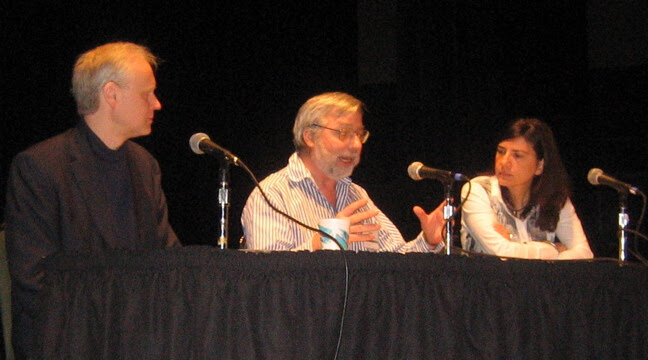
Miscellaneous
Lehar’s world is really vast, and what we have outlined above just scratches the surface of the musings of a great thinker (see Clifford Algebra: A visual introduction (Lehar 2014)). In reality, Lehar has given thought to pretty much every area of philosophy (for Lehar’s views on eternalism vs. presentism, see the “Frozen Time” excerpt in Appendix A). A stark example for me that demonstrates how vast his sphere of thought is and how far it reaches is that when I first contacted him, I mentioned that I was thinking of ways to represent 3D hyperbolic space with gradient index optics (Gomez Emilsson 2018a). In turn, he mentioned that he had already also considered something similar and that I could in fact find an old discussion of his in one of his books about the topic (see: picture below). This exchange, among others, is what made me feel that QRI and Lehar are indeed really hanging out on the same wavelength across many dimensions of thought.
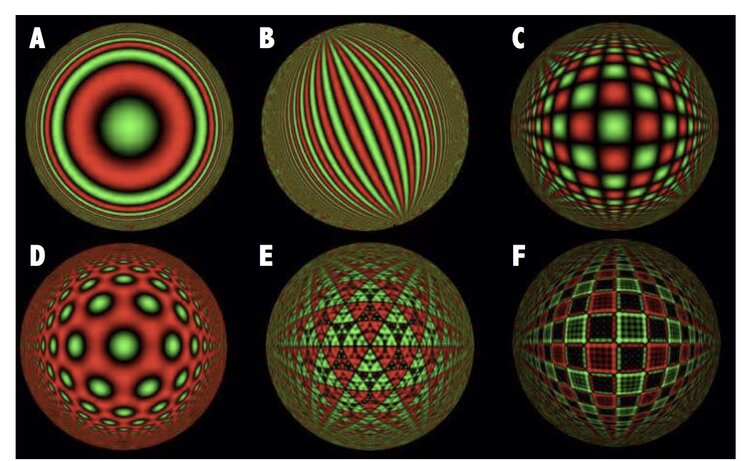
How the Work of Steven Lehar Interacts with Other QRI Lineages
David Pearce would point out that hedonic tone is an extremely important aspect of our world-simulation! You see, the rabbit hole goes deeper. If you are repulsed by the idea of indirect realism about perception because it makes you feel like a prisoner of your mind, it will turn out that you are now under the spell of an implicit direct realism about the connection between ideas and hedonic tone. In a happy and ecstatic state, you can in fact experience the idea of the world in your head as rather funny, curious, and perhaps even comforting! So the way in which ideas get represented includes a whole gamut of shades of affect that “paint” them. From hilarity to existential dread, the affective component of experience is coercive in how it shapes our interpretations of reality. Thinking about deep questions can give you the impression that the world is scary and unsettling or mysterious and amazing, all depending on your mood. The task of paradise engineering is not to be realized by modifying the external world (or at least that’s not at the heart of the transformation). Rather, it is about zoning in on the affective texture of experience and finding functional substitutes devoid of misery. Really, in this light, paradise engineering is just extremely advanced interior design.
Similarly, we find a lot of overlap and complementarity between Lehar’s work and other QRI lineages. As we continue to weave together these diverse models of neural computation, we expect to see a lot of synergy emerge. In time, we will outline how each component of the ecosystem synergizes with the rest. For now, please join me in welcoming Steven Lehar to our lineages! Welcome, Steven!
Acknowledgements
Many thanks to Andrew Zuckerman for providing comments and edits to this essay. Also thanks to Anders Amelin and Maggie Wassinge for pointing out the lineage-worthy contributions of Steven Lehar.
Excerpts
The Dimensions of Conscious Experience
Quote from page 21 of “The Function of Conscious Experience” by Steve Lehar:
Once we accept the fact that the world of visual consciousness is a pattern of energy in our physical brain, we can begin to examine that conscious experience to see what it might tell us about its neurophysiological correlate. The practice of phenomenology for investigating mental function was more popular before modern neuroscience introduced a new concept of neurocomputation that seems inconsistent with phenomenological observation. (Vernon 1937, 1952, Gregory 1981, Ramachandran & Blakeslee 1998, Smythies 1953, 1988, 1994, 1999, Koffka 1935, Köhler 1924) The most basic and salient fact of visual consciousness is that it appears as a three-dimensional spatial structure (Vernon 1952, p. 81- 92). More specifically, the phenomenal world is composed of solid volumes, bounded by colored surfaces, embedded in a spatial void. Every point on every visible surface is perceived at an explicit spatial location in three-dimensions (Clark 1993), and all of the visible points on a perceived object like a cube or a sphere, or this page, are perceived simultaneously in the form of continuous surfaces in depth. The perception of multiple transparent surfaces, as well as the experience of empty space between the observer and a visible surface, reveals that multiple depth values can be perceived at any spatial location. The information content of perception can therefore be characterized as a three-dimensional volumetric data structure in which every point can encode either the experience of transparency, or the experience of a perceived color at that location. Since perceived color is expressed in the three dimensions of hue, intensity, and saturation, the perceived world can be expressed as a six-dimensional manifold (Clark 1993), with three spatial and three color dimensions.
The Cartesian Theatre and the Homunculus Problem
Quote from pages 21-22 of “The Function of Conscious Experience” by Steve Lehar:
This “picture-in-the-head” or “Cartesian theatre” concept of visual representation has been criticized on the grounds that there would have to be a miniature observer to view this miniature internal scene, resulting in an infinite regress of observers within observers. However this argument is invalid, for there is no need for an internal observer of the scene, since the internal representation is simply a data structure like any other data in a computer, except that this data is expressed in spatial form. If the existence of a spatial data structure required a homunculus to view it, the same objection would also apply to symbolic or verbal information in the brain, i.e. epistemic as opposed to sensory perception, which would also require a homunculus to read or interpret that data. In fact any information encoded in the brain needs only to be available to other internal processes rather than to a miniature copy of the whole brain. To deny the spatial nature of the perceptual representation is to deny the spatial nature so clearly evident in the world we perceive around us. To paraphrase Descartes, it is not only the existence of myself that is verified by the fact that I think, but when I experience the vivid spatial presence of objects in the phenomenal world, those objects are certain to exist, at least in the form of a subjective experience, with properties as I experience them to have, i.e. location, spatial extension, color, and shape. I think them, therefore they exist. All that remains uncertain is whether those percepts exist also as objective external objects as well as internal perceptual ones, and whether their perceived properties correspond to objective properties. But their existence in my internal perceptual world is beyond question if I experience them, even if only as a hallucination.
Frozen Time
Quote from pages 67-68 of “The Boundaries of Human Knowledge: A Phenomenological Epistemology or Waking Up in a Strange Place” by Steven Lehar:
If time were a frozen dimension as proposed above, that would do considerable violence to our everyday notions of causality, and thereby radically alter our view of all causal explanations. For example the first, most basic feature of causality is that matter that exists has a tendency to continue to exist. (unless it happens to decay into energy, which then also continues to exist) In frozen space-time, this means that particles of matter no longer appear as points moving through empty space, but they become long spaghetti strands extending continuously through the time dimension. The causal property of persistence has thereby been transformed into a geometrical or structural feature in frozen spacetime, something like the logic of static structures, whereby a block will never be found hanging unsupported in space, but must always be supported by other blocks that rest on still other blocks all the way down to the supporting ground. Likewise, the explanation for the logic of evolution is dramatically altered when viewed in frozen spacetime. It can no longer be said that if an organism adapts to its environment it will continue to propagate, otherwise it will go extinct. Instead, we would have to say that there are many parallel and branching threads of life from the first living thing stretching on toward the future, together with countless side-branches of life that peter out because they don’t stretch forward in time toward the future, but break up into disorganized lifeless matter. The conventional causal explanation becomes as tautological in frozen spacetime as saying that the only branches of a tree that grow to great heights are those that grow upward, otherwise they never grow to great heights. A causal law has been transformed into a structural feature of the time-line of life. I do not propose that the static formulation of frozen space-time is necessarily more correct or veridical than the conventional flowing time explanation, but rather that there is no way in principle for us to comprehend something as fundamental as time, and the frozen time explanation may well be just as far from the ‘truth’ as the conventional flowing time explanation. The point is that there can be alternative explanations of reality that are as profoundly different in their assumptions and their manner of explaining that reality as are the flowing and frozen time explanations, and yet they are also in some sense equivalent, because the structural laws of the frozen time explanation correspond exactly to the causal law of the flowing time explanation, although expressed in a completely different form. So it may be that the realist explanation of the world in terms of flowing time and causality is both an accurate reflection of the causal laws of the noumenal world, while at the same time being as fundamentally different and thus ‘wrong’ in its expression of those laws as the difference between the flowing-time and the frozen-time explanations of reality. Thus the realist and the idealist are both right, our perception of the dimensions of reality are both an accurate reflection of the world as it really is, as must necessarily be the case for perception to be evolutionarily adaptive, and at the same time there is truly nothing we can know about the true nature of the noumenal world as it really is, it may be as different from our phenomenal experience as is the frozen spacetime world to the flowing-time causal world.
A Psycho-Aesthetic Hypothesis
Quote from The Two Worlds of Reality by Steven Lehar:
The harmonic resonance theory of neurocomputation also accounts for a number of other aspects of human experience which have never found a satisfactory explanation elsewhere. For the most prominent characteristics of harmonic resonance are symmetry and periodicity of the standing wave patterns both in space and in time. It turns out that symmetry and periodicity have very special significance in human experience, for these properties are ubiquitous in human aesthetics, as seen in the symmetrical and periodic patterns of design used in all cultures throughout human history to decorate clothing, pots, tools and other artifacts, especially items of special symbolic or religious significance. Symmetry and periodicity are also prominent features of architecture, music, poetry, rhythm, and dance. In chapter 11 I propose a psycho-aesthetic hypothesis, whereby any principles of aesthetics that are found to be universal across all human cultures, are thereby indicative of properties that are fundamental to the human mind itself, rather than a cultural heritage. I propose therefore that the symmetry and periodicity in art and music are aesthetically pleasing exactly because they are easily encoded in the periodic basis function offered by the harmonic resonance representation.
Besides providing collateral support for the harmonic resonance theory, the psycho-aesthetic hypothesis can be inverted to identify even more properties of mental function than those revealed by phenomenological analysis alone. For the primitives of the visual arts, music, and dance, can be seen as evidence for the nature of visual, auditory, and motor primitives in the brain. This in turn suggests a periodic basis set in perception, in the nature of a Fourier code. The advantage of a periodic basis set is that when a match is found to an input pattern, the periodic basis set automatically extrapolates that pattern outward in space and time, reifying the unseen portions of the pattern on the basis of the sample present in the input. This perceptual extrapolation explains the amodal completion of hidden portions of perceived objects and surfaces in the world. Evidence for this periodic basis set can be seen even in the abstract world of mathematics, where the periodicity inherent in the number line reflects an attempt to quantify the world in terms of periodic patterns. This insight serves to unite the fields of science and aesthetics, and reveals mathematics as a more abstracted refinement of the same principles observed in the visual and musical arts, which in turn are merely a more abstracted refinement of the principles behind visual and auditory perception, as discussed in chapter 11. The harmonic resonance theory also offers an explanation for one of the most enduring mysteries of human experience, which is the question of why resonances in musical instruments and the rhythmic beating of drums have such a powerful ability to evoke the deepest emotional response in the human soul. I propose that the musical instrument represents man’s first modest success at replicating the physical principle behind biological computation, and the strong emotional response evoked by these inanimate resonances reflects an unconscious recognition of the essential affinity between mind and music.
What Developmental Milestones Are You Missing?
Quote from What Developmental Milestones Are You Missing? by Scott Alexander:
I remember reading through Korzybski’s giant blue book of General Semantics, full of labyrinthine diagrams and promises that if only you understood this, you would engage with the world totally differently, you’d be a new man armed with invincible cognitive weapons. And the key insight, maybe the only insight, was “the map is not the territory,” which seems utterly banal.
But this is a self-environment distinction of exactly the sort that children learn in development. It’s dividing your own representation of the world from the world itself; it’s about as clear a reference to theory of mind as you could ask for. Korzybski considered it a revelation when he discovered it; thousands of other people found it helpful and started a movement around it; I conclude that these people were missing a piece of theory-of-mind and Korzybski gave it to them. Not the whole deal, of course. Just a piece. But a piece of something big and fundamental, so abstract and difficult to teach that it required that whole nine-hundred-something page book to cram it in.
Tags